Last Updated on August 14, 2025
Coast Flashlight Is Not Working? Here’s How to Fix It
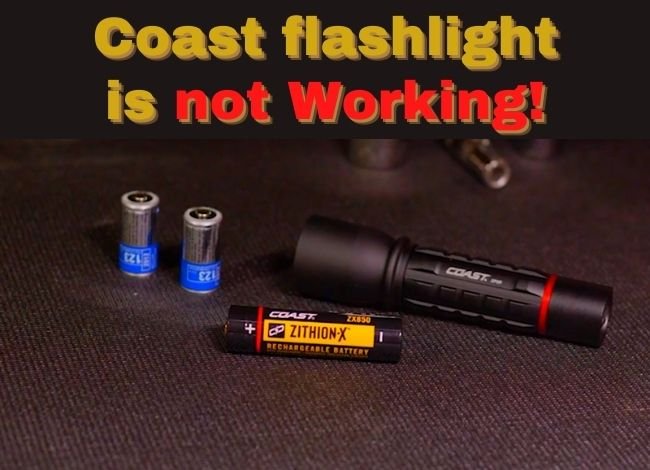
The Coast flashlight is known for its durable build, high-quality illumination, and user-friendly design. Whether you’re an outdoor enthusiast, a tactical gear user, or someone looking for a reliable light source for emergency preparedness, Coast has been a popular choice in the flashlight industry. However, like all electronic devices, even the best Coast flashlight can stop working unexpectedly.
If your Coast flashlight is not working, don’t worry — you’re not alone. Flashlight malfunction is a common issue that can arise from battery failure, internal damage, or simple wear and tear. In this comprehensive guide, we’ll explore the common reasons behind the issue, step-by-step solutions, and battery replacement instructions.
Let’s dive in and get your flashlight working again.
Why Your Coast Flashlight Is Not Working
Every flashlight user, at some point, faces the frustration of pressing the switch and getting no response. Coast flashlights, although reliable, can experience certain problems due to multiple reasons. Below are the most common causes why your Coast flashlight might not be turning on:
1. Battery Problem
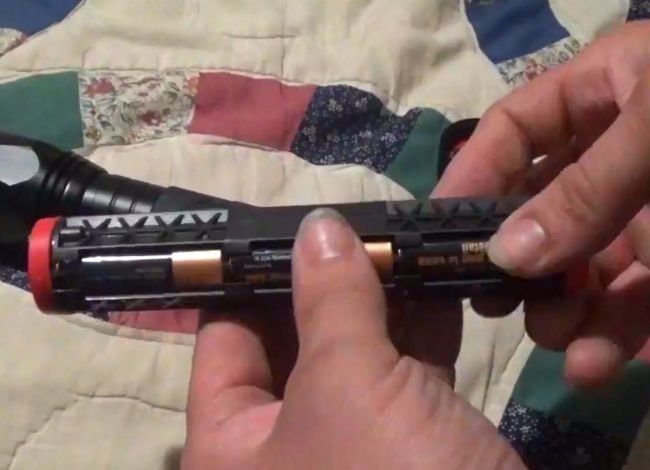 A failing or damaged battery is one of the most common reasons a Coast flashlight is not working. Over time, batteries can lose their charge capacity or become corroded. In some cases, the flashlight might appear dead simply because the batteries are inserted the wrong way or are not compatible.
A failing or damaged battery is one of the most common reasons a Coast flashlight is not working. Over time, batteries can lose their charge capacity or become corroded. In some cases, the flashlight might appear dead simply because the batteries are inserted the wrong way or are not compatible.
Solution:
Check the battery compartment for corrosion or leakage. If the batteries are old or depleted, remove them and replace them with new, recommended batteries (e.g., AA, AAA, or rechargeable Lithium-ion, depending on the model). Always insert the negative side downward, as shown in the instruction manual.
Related Read: Best Tactical Flashlight with Rechargeable Battery
2. Worn-Out Internal Cables
Inside every Coast flashlight are cables connecting the bulb, switch, battery, and other internal circuits. If one of these wires becomes disconnected or damaged, the flashlight will stop working even if the battery is fine.
Solution:
Open the flashlight casing carefully and inspect the internal wiring. If you’re not confident doing this yourself, consult a flashlight repair technician or reach out to Coast’s support. Replace or reattach any loose or broken wires.
Also, inspect the charging cable if it’s a rechargeable model. A damaged charging cable can prevent the battery from getting powered up.
3. Faulty Switch Mechanism
The power switch of your flashlight can wear out over time, especially with frequent use. If pressing the button feels soft or non-responsive, the problem may be with the internal switch contacts.
Solution:
Disassemble the switch (if your model allows), clean any dirt or debris, and ensure all connections are secure. If the switch is defective, it may need to be replaced. You can contact Coast customer service for replacement parts or guidance.
4. Water or Moisture Damage
Even though many Coast flashlights are water-resistant or waterproof, prolonged exposure to moisture can cause damage. Water can short-circuit the internal components, especially if the O-ring seals are broken or the battery cap is not tightly secured.
Solution:
Remove the batteries and allow the flashlight to dry completely. Use silica gel packets or a dry, warm place to ensure all moisture is gone. Once dry, reinstall the batteries and test the flashlight.
5. Burned-Out LED Bulb
Unlike old incandescent bulbs, LED lights last longer. However, they are not immortal. If the LED component burns out or becomes disconnected, your flashlight won’t light up.
Solution:
Inspect the LED assembly (if accessible). If you suspect the LED is burned out, you may need to replace the entire head or contact Coast for service options. Avoid using incompatible replacement bulbs.
Pro Tip:
For long-lasting performance, regularly clean your flashlight, use quality batteries, and store it in a dry, safe location. Learn more here: How to Maintain a Tactical Flashlight
How to Change the Battery in a Coast Flashlight (Step-by-Step Guide)
If your Coast flashlight is not working, one of the first troubleshooting steps is to inspect and replace the battery. This is especially true if the light dims quickly or fails to turn on at all. Replacing the battery properly can bring your flashlight back to life in minutes.
Follow this simple, illustrated step-by-step process to replace the battery in your Coast flashlight the right way:
🔧 Step 01: Remove the Top Cap
Start by holding the flashlight firmly and twisting the top part of the flashlight counterclockwise. In most Coast flashlight models, the battery compartment is accessed from the top or the tail cap, depending on the design.
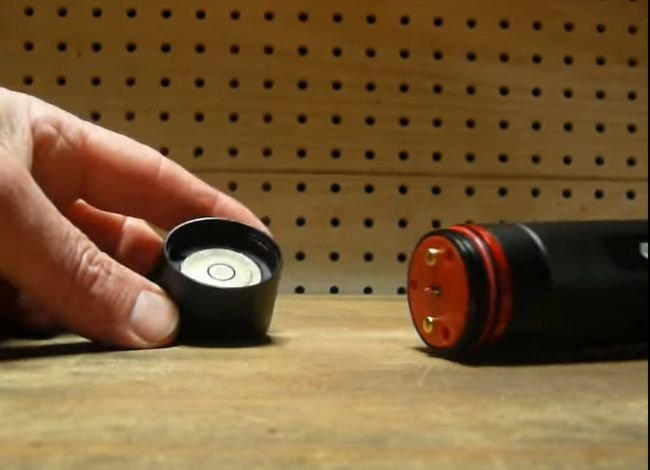 Keep turning until the cap comes off. Be gentle to avoid damaging the threads.
Keep turning until the cap comes off. Be gentle to avoid damaging the threads.
Tip: If your flashlight has been exposed to moisture or dust, the cap might be hard to twist. Use a cloth for a better grip, and avoid using excessive force.
🔋 Step 02: Remove the Old Batteries
Once the cap is off, you’ll see the battery holder or the batteries directly. Depending on the model, you may need to tilt the flashlight slightly to slide the batteries out.Inspect the batteries for any leakage, corrosion, or bulging. These are signs of a bad battery and could be the reason why your Coast flashlight is not working.
Caution: Corroded batteries can damage the internal contacts. If you notice any rust or white powder, clean it carefully using a dry cotton swab or soft cloth.
⚡ Step 03: Install the New Batteries Correctly
Insert fresh, high-quality batteries into the compartment. Make sure to align the polarity correctly—usually, the negative side (–) should face downward. Incorrect battery installation is one of the most common reasons a flashlight won’t work even with a new battery.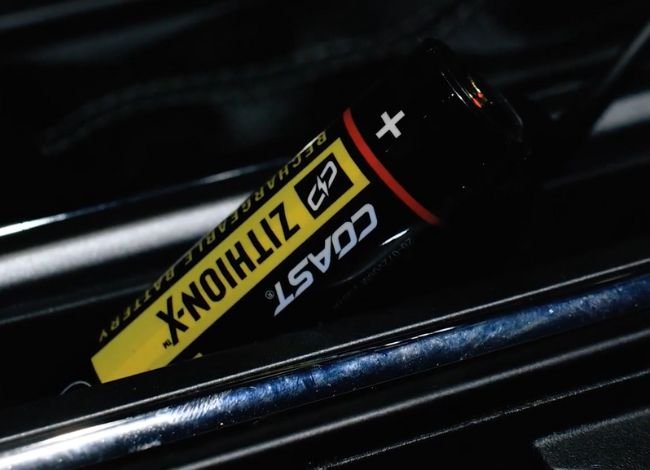
Tip: Use manufacturer-recommended batteries for optimal performance. Some Coast flashlights support rechargeable Li-ion batteries, while others run on alkaline AA or AAA batteries.
🔄 Step 04: Reattach the Top of the Flashlight
Once the new batteries are properly placed, screw the cap back on. Make sure it’s tightened securely but not over-tightened.
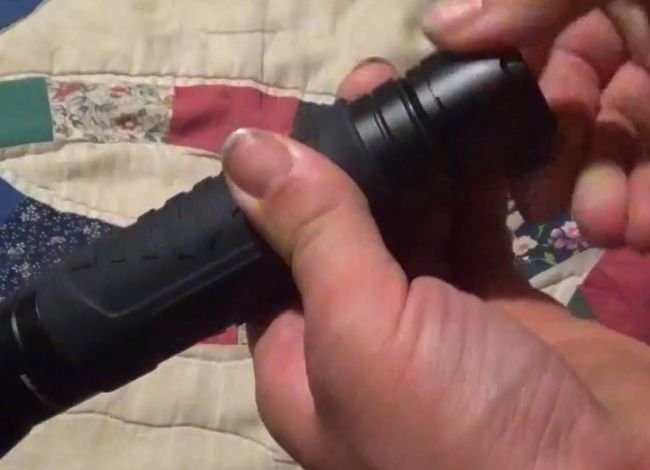
Now, try switching on the flashlight. If it powers up immediately, the battery replacement fixed the issue.
🔌 Step 05: Charge (If It’s a Rechargeable Model)
If you’re using a rechargeable model like the Coast HP7R or Coast A25R, plug it into the charger using the correct charging cable. Let it charge fully as per the manufacturer’s instructions.
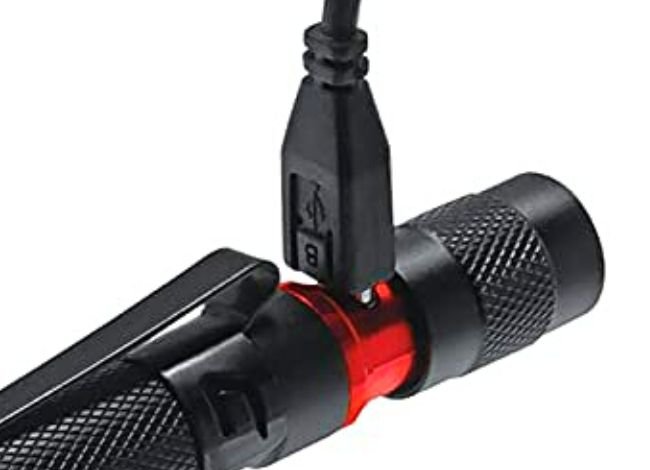
Check if the charging indicator lights up. If not, try a different cable or charging source to rule out cable damage — another potential reason your Coast flashlight is not working.
Common Mistakes to Avoid During Battery Replacement
- ❌ Installing batteries upside-down
- ❌ Mixing old and new batteries
- ❌ Using incorrect battery type (e.g., alkaline in place of lithium)
- ❌ Not cleaning the battery contacts
- ❌ Over-tightening the cap, damaging threads
⚠️ Still not working after battery replacement? Check our complete flashlight troubleshooting guide for more detailed insights.
More Troubleshooting Tips If Your Coast Flashlight Is Not Working
If battery replacement didn’t solve the issue and your Coast flashlight is still not working, don’t panic. There are several other components that may be causing the malfunction. Let’s go deeper into flashlight diagnostics and fix the problem.
🔘 1. Check the Power Switch
The power switch is one of the most used components and can wear out over time. If your flashlight doesn’t respond when you press the button, the problem may lie in the switch itself.
How to test it:
- Click the switch several times and feel for any looseness or lack of resistance.
- Gently open the casing (if possible) and examine the switch contacts.
- Use a multimeter to check continuity when pressing the button.
Solution:
If the switch feels unresponsive or inconsistent, it might need cleaning or replacement. You can contact Coast support for replacement parts, or read our guide on how to fix flashlight switch problem.
🧲 2. Clean the Contact Points
Over time, dirt, moisture, battery acid, or corrosion can build up on the contact points inside the flashlight. This blocks the flow of electricity and can cause the flashlight to fail.
How to clean it:
- Open the flashlight and remove the batteries.
- Inspect the battery compartment and tail cap.
- Use a pencil eraser or a Q-tip dipped in rubbing alcohol to gently scrub the metal contacts.
Solution:
Once cleaned, let it dry completely before reassembling. This simple cleaning can often bring a dead flashlight back to life — especially if it’s a contact issue.
🌧️ 3. Inspect for Moisture or Water Damage
Even though most Coast flashlights are water-resistant (rated IPX4 or higher), extended exposure to moisture or submersion can cause internal damage.
Signs of water damage:
- Foggy lens or water droplets inside.
- Corrosion or rust on metal components.
- Faint flickering when turned on.
Solution:
- Immediately remove the batteries.
- Dry the flashlight thoroughly using silica gel packs or leave it in a warm, dry place for at least 24 hours.
- Reassemble and test after ensuring it’s completely moisture-free.
💡 Consider upgrading to one of our best tactical flashlights if you often use lights outdoors in wet environments.
⚙️ 4. Check for Loose or Misaligned Components
Sometimes, the flashlight won’t work simply because parts aren’t properly aligned or tightened. This is common in models with removable heads or tail caps.
What to do:
- Unscrew and reattach both ends firmly.
- Ensure O-rings are in place and not damaged.
- Shake the flashlight gently and listen for any rattling.
Solution:
Tighten all parts and verify battery polarity. A loose component can break the circuit and cause your Coast flashlight to stop working even if everything else is functional.
🛠️ 5. Perform a Full Reset (for Rechargeable Models)
Some Coast models with advanced circuitry may require a manual reset after experiencing a power glitch.
How to reset:
- Remove the battery.
- Hold the power switch for 15–30 seconds.
- Reinsert the battery and test the flashlight.
⚠️ Not all models have resettable features. Refer to the user manual or Coast’s support site for model-specific instructions.
🔍 Bonus Tip: Use a Multimeter to Test Battery Output
If you’re unsure whether your batteries are the problem, use a multimeter to test their voltage. A fresh AA or AAA battery should read around 1.5 volts, while a fully charged 18650 should be around 4.2 volts.
Read more: How to test batteries with a multimeter
Repair or Replace? What to Do If Your Coast Flashlight Is Not Working
At this point, if your Coast flashlight is not working after battery replacement, cleaning contacts, checking the switch, and drying for moisture, you might be wondering — is it worth repairing, or should you replace it?
Let’s break down your options and help you make the right decision based on cost, usage, and reliability.
🔧 When You Should Repair the Flashlight
If the flashlight issue is minor and fixable with a little effort, repair is usually a better and more economical choice. Here are signs your Coast flashlight can be repaired:
- 🔋 The battery just needs replacing.
- ⚡ The contacts need cleaning.
- 🔘 The switch is stuck but not broken.
- 🧲 Internal wires are loose but can be resoldered.
- 💦 Moisture damage is minor and components are intact.
Estimated repair cost: $0–$15 (DIY)
Repair time: 10–30 minutes
Tools needed: Multimeter, screwdriver, rubbing alcohol, Q-tips, fresh batteries
🛠️ You can find basic repair guides in our post on how to fix a tactical flashlight.
🗑️ When It’s Time to Replace the Flashlight
There are times when replacement is the smarter (and safer) move. Consider replacing your flashlight if:
- 🔩 The LED emitter is completely burned out.
- 💥 The internal circuits are damaged.
- 🔌 The rechargeable battery no longer holds a charge after multiple attempts.
- 🧰 Replacement parts are unavailable or cost more than the flashlight.
If your Coast flashlight is not working and it’s beyond repair, investing in a newer, more advanced model can be beneficial. Newer models offer better brightness, longer battery life, and upgraded durability features.
Recommended Coast Flashlight Replacements (Top Picks)
Here are a few top-rated Coast flashlights that make excellent replacements or upgrades:
🔦 Coast HP7R Rechargeable Flashlight
- Max output: 1000 lumens
- Beam distance: 1040 feet
- Battery: Rechargeable + alkaline backup
- Highlight: Flex Charge Dual Power system
💡 Great for: Home emergency kits, search and rescue, outdoor adventures
🔗 Explore More Rechargeable Flashlights
🔦 Coast G20 Inspection Beam Penlight
- Max output: 120 lumens
- Battery: 2x AAA
- Highlight: Compact, precise beam for inspection tasks
💡 Great for: Mechanics, electricians, and close-range work
🔦 Coast Polysteel 600
- Max output: 710 lumens
- Battery: 4x AA or rechargeable
- Highlight: Virtually indestructible polymer + stainless steel body
💡 Great for: Harsh environments, work sites, camping
🔗 Best Durable Tactical Flashlights
What to Look for in a New Flashlight
When upgrading from a non-functional unit, consider the following factors:
| Feature | What to Look For |
|---|---|
| Battery Type | Rechargeable + alkaline backup for flexibility |
| Lumen Output | 500+ lumens for tactical or outdoor use |
| Durability | IPX4+ waterproof rating, drop-proof |
| Beam Options | Adjustable zoom or beam focus |
| Warranty | Lifetime or limited warranty from Coast |
✅ Pro Tip: Always register your new Coast flashlight for warranty coverage. It can save you money in the long run.
Frequently Asked Questions (FAQs)
If your Coast flashlight is not working, you likely still have a few questions in mind. Here are the most common user questions — answered simply and clearly.
Why does my Coast flashlight turn on but then quickly turn off?
This usually indicates a low or dying battery, poor contact with the terminals, or an internal short. Try replacing the batteries and cleaning the contacts.
How long should Coast flashlight batteries last?
Depending on usage, brightness level, and battery type, Coast flashlight batteries can last anywhere from 2 to 20 hours on a full charge or fresh alkaline cells. Always check your model’s runtime in the manual or product page.
Can I use third-party batteries in my Coast flashlight?
Yes, but make sure they match the voltage and capacity recommended by Coast. Using incompatible batteries may void your warranty or damage internal components.
⚠️ Never mix old and new batteries or different brands in the same flashlight.
Does Coast offer a warranty if my flashlight stops working?
Yes. Most Coast flashlights come with a lifetime warranty against defects in materials and workmanship. You can check details or start a claim at their official website.
Where can I buy replacement parts for Coast flashlights?
You can contact Coast customer support directly, or check on platforms like Amazon or local hardware stores for batteries, switches, or replacement caps compatible with your model.
Coast Flashlight Troubleshooting Checklist ✅
Here’s a quick summary checklist to help you diagnose and fix your flashlight:
| Issue | Solution |
|---|---|
| 🔋 Dead or old batteries | Replace with new, properly aligned batteries |
| ⚡ Dirty or corroded contacts | Clean with rubbing alcohol or pencil eraser |
| 🔘 Switch not responding | Check for broken switch or internal damage |
| 🧲 Loose internal components | Tighten all threads and caps properly |
| 💦 Water exposure | Dry the flashlight and remove moisture |
| 🔌 Not charging (rechargeable models) | Check USB cable and charger compatibility |
| 🔧 Still not working | Consider professional repair or replacement |
Final Thoughts: Don’t Panic If Your Coast Flashlight Is Not Working
When your Coast flashlight is not working, it can feel like a frustrating setback — especially during emergencies or work. But in most cases, the issue can be resolved by changing the battery, cleaning the internal contacts, or checking for physical damage. By following the step-by-step guidance in this article, you can diagnose and fix your flashlight without much hassle.
If you decide to replace your current unit, Coast offers a wide range of durable, high-performance models to meet your needs — whether you’re camping, patrolling, or working in tough environments.
🔗 Also check out our in-depth reviews of other flashlight brands like Fenix, ThruNite, and SureFire.
Got questions or want help picking your next flashlight? Feel free to leave a comment or visit our contact page.
is there a warranty on this flashlight ? do you repair them wouldn’t think a fall from the truck seat would cause this
Coast 634 flashlight slipped off my lap sitting in a chair hitting carpeted floor and has never worked again. Don\t buy this junk!!!
Coast G34 flashlight (sorry G looked like a 6.)
I have a G70 flashlight that quit working. I thought maybe batteries were out but I put new ones in and it still does not work. The flashlight is not abused because it stays in my bedroom. What could the problem be?